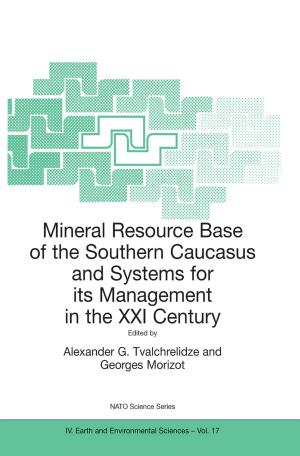An Evaluation of Japanese Environmental Regulations
Quantitative Approaches from Environmental Economics
Nonfiction, Science & Nature, Science, Biological Sciences, Environmental Science, Business & Finance, Economics| Author: | Toshi H. Arimura, Kazuyuki Iwata | ISBN: | 9789401799478 |
| Publisher: | Springer Netherlands | Publication: | May 30, 2015 |
| Imprint: | Springer | Language: | English |
| Author: | Toshi H. Arimura, Kazuyuki Iwata |
| ISBN: | 9789401799478 |
| Publisher: | Springer Netherlands |
| Publication: | May 30, 2015 |
| Imprint: | Springer |
| Language: | English |
Focusing on air pollution, energy efficiency and climate change, this book provides an introduction to Japan’s environmental policies and regulations, and offers economic analyses and RIAs (Regulatory Impact Analysis) of environmental regulations implemented or planned by the national and local governments. The opening chapter reviews environmental economics and outlines the current status of RIAs in Japan. Chapter 2 analyzes the NOx-PM Act, which prohibits the use of old and polluting vehicles in metropolitan areas. Chapter 3 examines a Tokyo metropolitan government regulation which requires installation of pollution control equipment in older trucks that fail to meet emission standards. Chapter 4 traces the impact of the NOx-PM Act on the used car market and used vehicle exports. Chapter 5 presents an economic analysis of a highway toll reduction, revealing an unexpected negative social impact: it increased traffic congestion and associated environmental problems. The final three chapters address policies and regulations related to energy efficiency and climate change Chapter 6 evaluates the effectiveness of Japan’s Energy Conservation Act, originally introduced in 1979 and amended numerous times to address climate change. Chapter 7 anticipates the impact of a proposed economy-wide carbon tax, using input-output analysis to assess short-term economic impacts in each sector. Also presented here is an examination of the effectiveness of a reduced carbon tax for energy-intensive industries, with a discussion of the impact of the proposal on households. The final chapter discusses the role and limitations of economic models for evaluating Japan’s mid-term GHG (Greenhouse Gas) emission target during the post-Kyoto period. This is the first book to evaluate Japanese environmental policies from an economic perspective, using a variety of current quantitative approaches. Its findings and suggestions will benefit students, policy makers and government officials in developing and developed countries where the public faces similar environmental problems.
Focusing on air pollution, energy efficiency and climate change, this book provides an introduction to Japan’s environmental policies and regulations, and offers economic analyses and RIAs (Regulatory Impact Analysis) of environmental regulations implemented or planned by the national and local governments. The opening chapter reviews environmental economics and outlines the current status of RIAs in Japan. Chapter 2 analyzes the NOx-PM Act, which prohibits the use of old and polluting vehicles in metropolitan areas. Chapter 3 examines a Tokyo metropolitan government regulation which requires installation of pollution control equipment in older trucks that fail to meet emission standards. Chapter 4 traces the impact of the NOx-PM Act on the used car market and used vehicle exports. Chapter 5 presents an economic analysis of a highway toll reduction, revealing an unexpected negative social impact: it increased traffic congestion and associated environmental problems. The final three chapters address policies and regulations related to energy efficiency and climate change Chapter 6 evaluates the effectiveness of Japan’s Energy Conservation Act, originally introduced in 1979 and amended numerous times to address climate change. Chapter 7 anticipates the impact of a proposed economy-wide carbon tax, using input-output analysis to assess short-term economic impacts in each sector. Also presented here is an examination of the effectiveness of a reduced carbon tax for energy-intensive industries, with a discussion of the impact of the proposal on households. The final chapter discusses the role and limitations of economic models for evaluating Japan’s mid-term GHG (Greenhouse Gas) emission target during the post-Kyoto period. This is the first book to evaluate Japanese environmental policies from an economic perspective, using a variety of current quantitative approaches. Its findings and suggestions will benefit students, policy makers and government officials in developing and developed countries where the public faces similar environmental problems.















